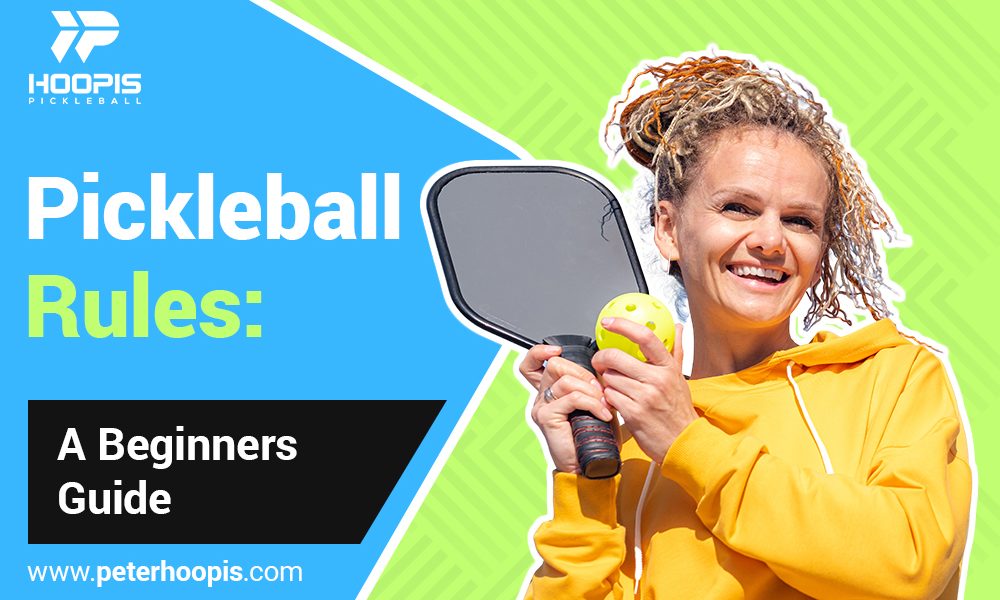When I first started playing pickleball, I quickly realized that understanding the basic rules of pickleball makes a huge difference. It’s an easy game to pick up, but there are a few key rules—like the double bounce rule, the non-volley zone, and the serving sequence—that can trip people up.
That’s why I put together this quick guide.
I’ll break everything down in a way that’s easy to understand so you can step onto the pickleball court with confidence.
Whether you’re playing singles or a doubles game, you’ll know exactly when to score points, when the serve switches, and how to avoid common mistakes.
Let’s dive in!
What Are The Pickleball Rules?
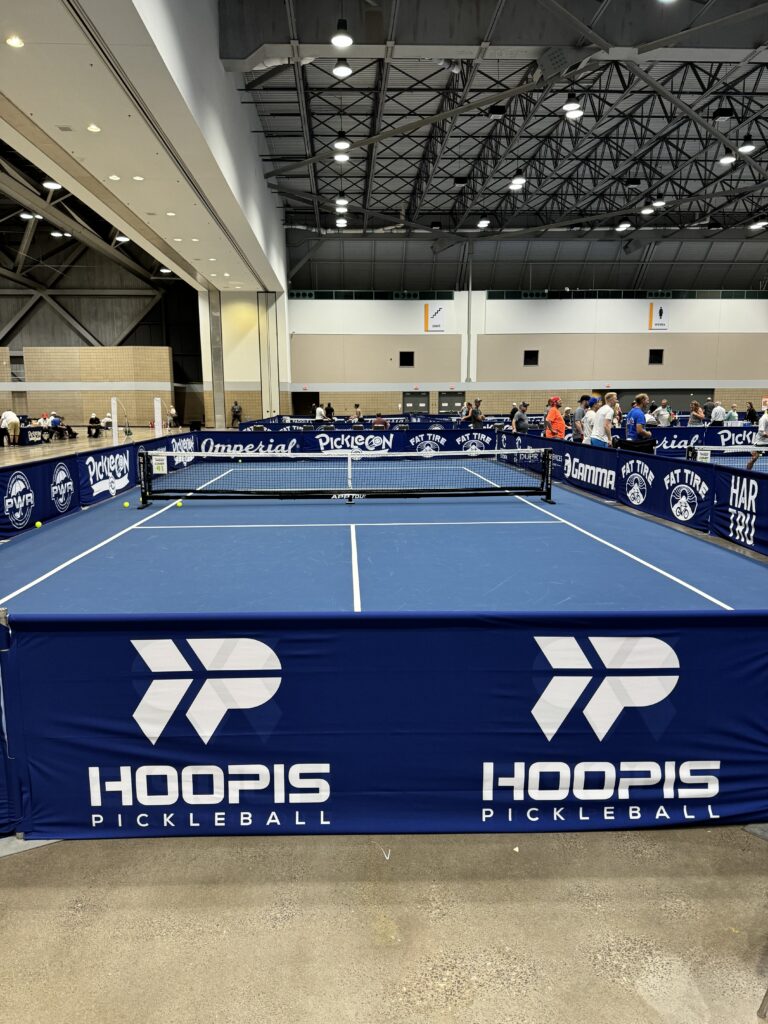
If you’re new to playing pickleball, the rules might seem a little confusing at first. But don’t worry—I’ll break them down in a simple way so you can get the hang of them fast.
At its core, pickleball is played as either singles (one-on-one) or doubles (two-on-two) on a pickleball court that’s similar in size to a badminton court.
The game starts with a serve, and players rally until a fault occurs. Points are only scored by the serving team (unless it is rally scoring and that is a whole new thing), and games are usually played to 11 points, but you have to win by at least two.
Here’s a quick breakdown of the basic pickleball rules you need to know:
- The Serve – The serving team starts each rally by hitting a legal serve into the opposite diagonal court. The server must have at least one foot behind the baseline and hit the ball with an underhand serve contacting below the waist.
- Double Bounce Rule – The ball must bounce once on each side before players can volley (hit it in the air). This prevents immediate serve and volley advantage and keeps rallies fair.
- The Non-Volley Zone (Kitchen) – Players cannot volley (hit the ball in the air) while standing inside the non-volley zone, also called the kitchen. However, you can step in to hit a ball after it bounces.
- Scoring Points – Only the serving team can score points. If the serving team results in a fault, they lose their serve and it moves to their partner (second server) or the opposing team (side out).
- Serving Rules in Doubles – In a doubles game, both partners on the serving side get a chance to serve before a side out occurs. The first server starts on the right side, and after winning a point, the server switches sides. The service sequence continues until the serving team loses a rally.
- Winning the Game – Most pickleball games are played to 11 points, and you must win by 2. Some tournament games go to 15 or 21 points.
These are the basic pickleball rules, but there are a few more details to go over—like faults, lets, and line calls—so let’s keep going! If you are looking for an in depth guide check out the official USAPA Pickleball Rulebook.
How to Serve in Pickleball (Serving Rules Explained)
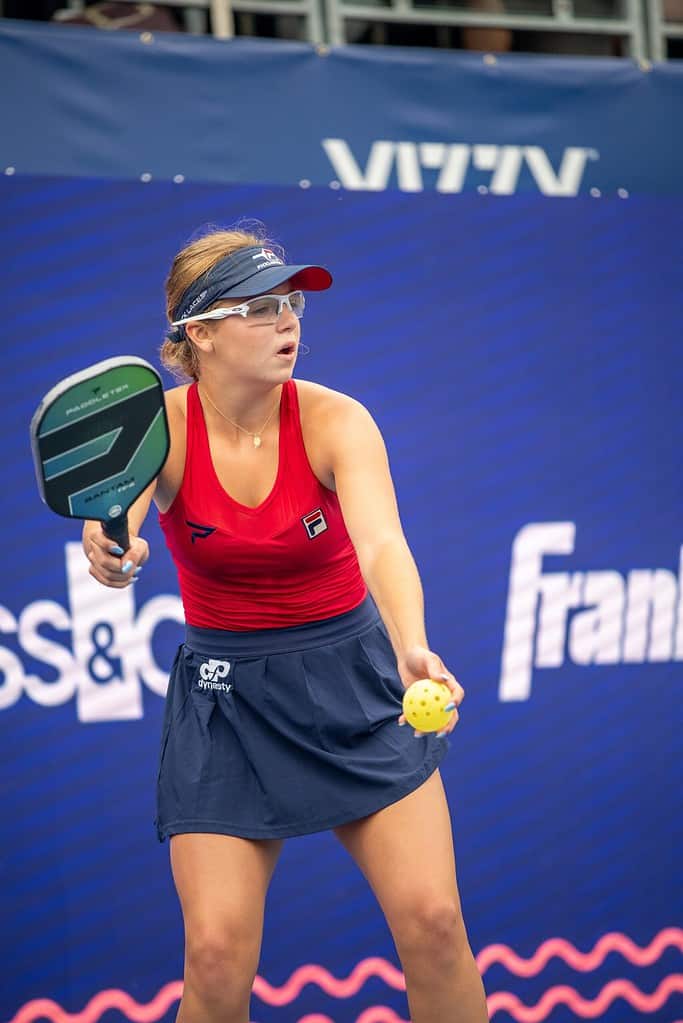
Serving in pickleball is different from other paddle sports like tennis or padel because it must be done underhand and follow specific rules. A legal serve sets the tone for the rally, so getting it right is key. Here’s how it works:
The Basics of a Pickleball Serve
- The server initiates the point by hitting the served ball into the opposite diagonal court past the non-volley zone line.
- The server must have at least one foot behind the baseline when serving.
- The serve attempt must be underhand, with the paddle making contact below the waist and moving in an upward motion.
- The ball contacting the paddle must happen before it crosses the waist level.
Serving in a Doubles Game
- In doubles, both players on the serving team get a chance to serve before a side out happens.
- The first serve always starts from the right side of the court.
- After scoring a point, the server switches sides and serves again.
- If the server loses the rally, the serve passes to their partner (the second server).
- If both partners lose their serves, the opposing team gets the next serve (side out).
Serving in a Singles Game
- In singles, there is only one server.
- The server’s position depends on their score:
- If their score is even, they serve from the right side.
- If their score is odd, they serve from the left side.
Faults & Violations on a Serve
A fault occurs if:
- The server’s feet touch the court or the baseline before making contact.
- The ball bounces before being hit.
- The serve lands outside the correct receiving court.
- The ball hits the non-volley zone line (except on a let serve, if allowed).
A fault results in a server’s loss, meaning the next serve goes to the other team or the second server in doubles.
Key Takeaways on Serving Rules
- The serve must be underhand and land in the opposite diagonal court.
- In doubles, each player on the serving side gets a turn before a side out.
- In singles, the server switches sides based on their score points.
- A fault on a serve leads to the next serve or a change of possession.
Mastering the serve is essential because it sets up every rally. Now, let’s go over another critical rule—the double bounce rule.
Understanding the Double Bounce Rule
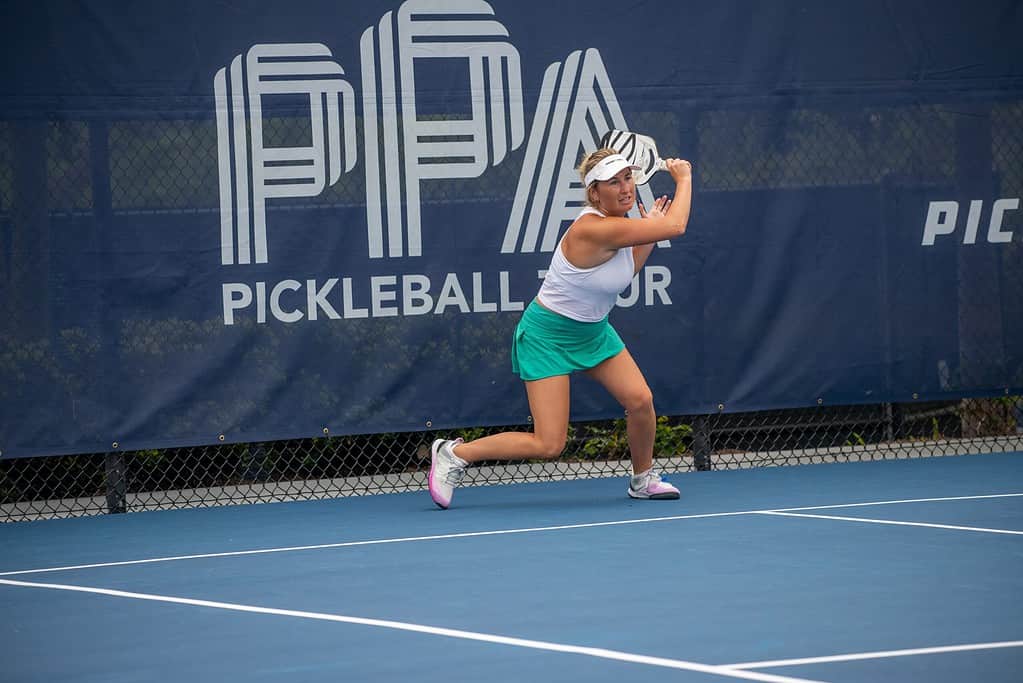
One of the most important—and sometimes overlooked—rules in pickleball is the double bounce rule (also called the two bounce rule). This rule ensures fair play and prevents players from rushing the net too soon.
What Is the Double Bounce Rule?
The double bounce rule means that:
- The receiving team must let the served ball bounce before returning it.
- The serving team must let the return bounce before hitting it back.
Only after these two bounces—one on each side—can players start volleying (hitting the ball in the air).
Why Does This Rule Exist?
The double bounce rule stops players from immediately taking advantage of a serve and volley advantage, which would make the game less balanced. It also encourages longer rallies and makes pickleball more strategic.
How the Double Bounce Rule Affects Play
- If a player volleys the ball before it bounces on their side during the first two shots of a rally, it’s a fault and the point goes to the other team.
- After both teams follow the bounce rule, players can start volleying or hitting ground strokes.
- This rule is why the first few shots of a rally tend to be more controlled and slower, allowing for better positioning before aggressive play begins.
Common Mistakes & How to Avoid Them
- Rushing the net too soon – Many new players forget to let the ball bounce and hit it out of the air too early. Stay patient!
- Not letting the second bounce happen – If you’re on the serving team, remember that even after returning the serve, the ball must still bounce again before you can volley.
- Forgetting the rule in fast-paced play – In heated rallies, it’s easy to forget the double bounce rule. Train yourself to be aware of the first two shots before going into full attack mode.
Key Takeaways on the Double Bounce Rule
- The ball must bounce once on each side before volleys are allowed.
- This rule prevents unfair serve and volley advantages.
- Breaking this rule results in a fault, and the other team wins the point.
- After the double bounce, players can volley or hit ground strokes freely.
Mastering this rule will make you a better player and keep your game within the official pickleball rules. Next, let’s cover another big one—the non-volley zone (kitchen rule).
What Is the Non-Volley Zone (Kitchen Rule)?
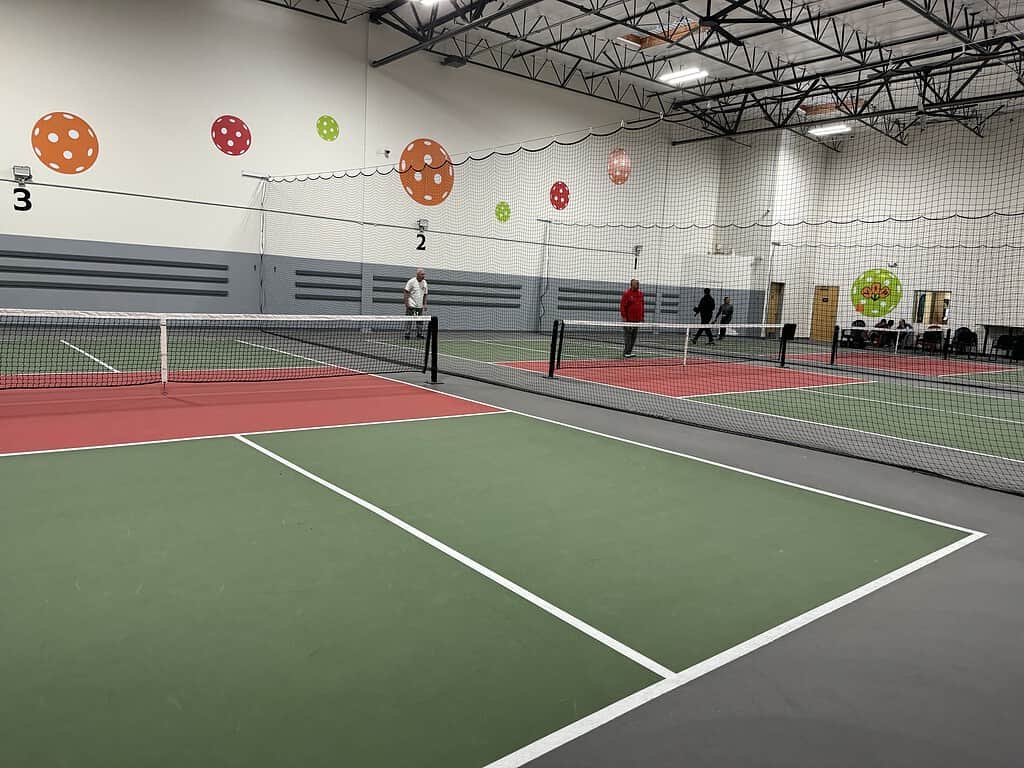
The non-volley zone, often called the kitchen, is one of the most unique (and sometimes confusing) rules in pickleball. It’s a seven-foot area on both sides of the net where you cannot volley the ball. This rule prevents players from dominating the net and keeps rallies fair.
The Basics of the Kitchen Rule
- The non-volley zone extends 7 feet from the net on both sides.
- Players cannot volley (hit the ball in the air) while standing inside this zone.
- If any part of a player’s foot touches the non-volley zone line while volleying, it’s a fault.
When Can You Enter the Kitchen?

- You can step into the non-volley zone at any time, as long as you’re not volleying the ball.
- You must let the ball bounce before hitting it if you’re inside the kitchen.
- After hitting a ball that bounces inside the kitchen, you can step out and continue playing as usual.
Common Kitchen Rule Mistakes
- Volleying while stepping on or inside the kitchen – Even if just your toe touches the non-volley zone line, it’s a fault.
- Momentum carrying you into the kitchen – If you volley the ball from just outside the kitchen but momentum takes you in, it’s still a fault.
- Confusion over line rules – Unlike most other pickleball court lines, the non-volley zone line is part of the kitchen, meaning stepping on it while volleying is a violation.
Why Does the Kitchen Rule Exist?
The kitchen rule prevents players from standing right at the net and smashing every shot, which would make the game unfair. Instead, it encourages players to use strategic shot placement and dinking (soft shots that land in the kitchen) to control points.
Key Takeaways on the Non-Volley Zone
- You cannot volley the ball while standing inside the non-volley zone.
- You can step into the kitchen to return a ball after it bounces.
- If your momentum takes you into the kitchen after a volley, it’s a fault.
- The non-volley zone line is part of the kitchen, so stepping on it during a volley is not allowed.
Understanding the kitchen rule will help you avoid unnecessary faults and improve your dinking strategy. Next, let’s go over another important part of the game—common faults and rule violations.
Common Pickleball Faults & Rule Violations
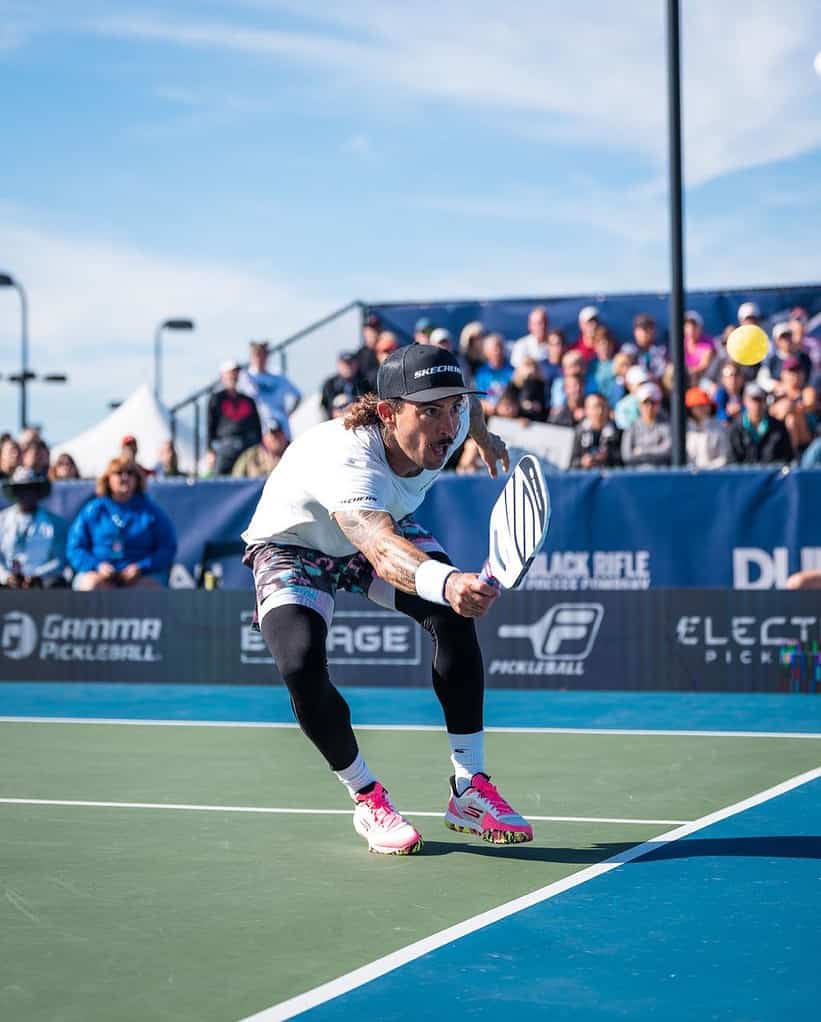
In pickleball, a fault occurs when a player breaks a rule, immediately ending the rally. Understanding common faults will help you avoid giving away easy points and keep your game clean.
1. Faults on the Serve
- Illegal Serve Attempt – The server must hit underhand, with the paddle below the waist and moving in an upward motion.
- Foot Fault – At least one foot must be behind the baseline during the serve. If a server’s feet step on or inside the line before hitting the ball, it’s a fault.
- Ball Lands Out of Bounds – The served ball must land in the opposite diagonal court. If it lands outside or on the non-volley zone line, it’s a fault.
- Service Sequence Violation – In doubles, if the wrong server serves or serves from the incorrect side, it results in a fault.
2. Double Bounce & Volley Violations
- Breaking the Double Bounce Rule – Both the receiving team and serving team must let the ball bounce once before hitting it in the air. If a player volleys too soon, it’s a fault.
- Illegal Volley in the Kitchen – If a player volleys the ball while touching the non-volley zone line or stepping inside the kitchen, it’s a fault.
- Momentum Rule Violation – Even if you volley legally outside the kitchen, if your momentum carries you into it, the point is lost.
3. Ball Contact & Line Faults
- Ball Hits the Net on a Serve and Lands Out – If the served ball touches the net and doesn’t land in the correct receiving court, it’s a fault.
- Ball Lands Out of Bounds – If the ball lands outside the court lines, the other team wins the point.
- Ball Bounces Twice – If the ball bounces twice before being hit, the rally ends in a fault.
- Hitting the Ball Before It Crosses the Net – Players cannot strike the ball before it crosses the net into their side of the pickleball court.
4. Other Common Rule Violations
- Interference or Distractions – A player cannot yell or make distracting movements while the opponent is playing a shot.
- Touching the Net or Posts – If a player, paddle, or clothing touches the net, it’s a fault.
- Double Hits – If a player hits the ball twice on one swing, it’s a fault unless it happens in a single, continuous motion.
Key Takeaways on Faults & Rule Violations
- Faults result in a lost rally and can lead to a side out if the serving team loses the point.
- Serving violations, breaking the double bounce rule, and kitchen faults are the most common mistakes.
- Knowing these basic pickleball rules will help you avoid unnecessary faults and play a clean game.
Next, let’s go over one of the most misunderstood aspects of the game—how to keep score in pickleball.
How To Keep Score In Pickleball
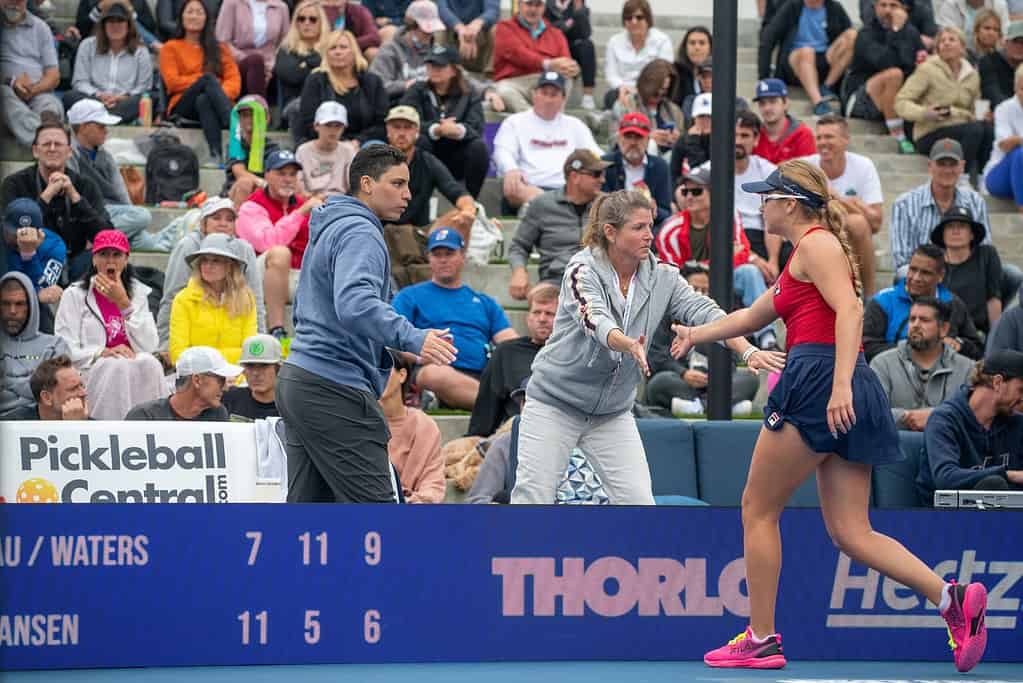
Scoring in pickleball can be a little tricky at first, especially in doubles games, but once you get the hang of it, it’s simple. Let’s break it down step by step.
How Does Scoring Work in Pickleball?
- Only the serving team can score points – If the receiving team wins a rally, they don’t score; instead, the serve moves to the next player or team (side out).
- Games are usually played to 11 points, but you must win by 2. Some tournaments play to 15 or 21.
- The serving team’s score determines positioning and who serves.
How to Keep Score in a Doubles Game
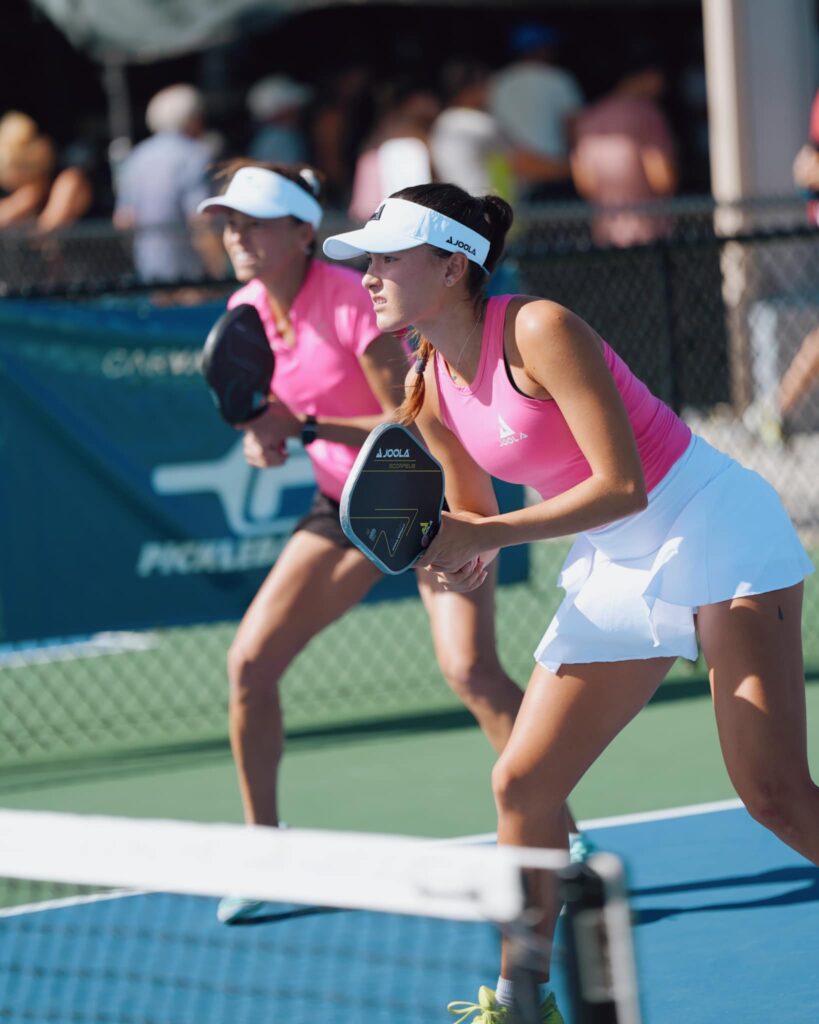
Pickleball doubles scoring uses a three-number system:
[Serving Team’s Score] – [Receiving Team’s Score] – [Server Number]
For example: 5 – 3 – 2 means:
- The serving team has 5 points.
- The receiving team has 3 points.
- The second server is serving.
The First Service Sequence
- At the start of a doubles game, the first server on the serving side gets only one serve.
- After they lose a rally, the opposing team gets the serve (side out).
- After this, both partners on a team get a turn to serve before the serve passes to the other team.
Regular Service Rotation in Doubles
- When a team wins a point, the server switches sides with their partner and continues serving.
- If the server loses a rally, the second server gets their turn.
- If the second server loses, the opposing team gets the serve (side out).
- The new serving team starts with their first server and follows the same process.
How to Keep Score in a Singles Game
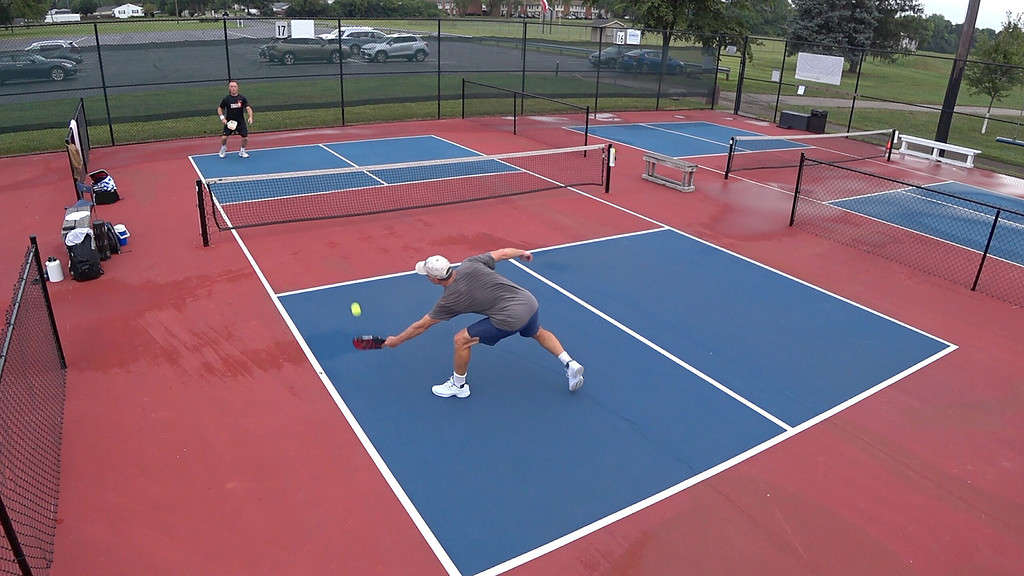
Scoring in singles pickleball is simpler:
- The server’s position depends on their score:
- If their score is even, they serve from the right side.
- If their score is odd, they serve from the left side.
- The opponent does not get a second server—when they win a rally, they simply take over the serve.
Calling Out the Score Correctly
Before each serve, the server must announce the score:
- In doubles: “[Serving Team’s Score] – [Receiving Team’s Score] – [Server Number]”
- In singles: “[Serving Team’s Score] – [Receiving Team’s Score]”
Example: If the serving doubles team has 7 points, the receiving team has 5 points, and the first server is up, they would say:
🗣 “7 – 5 – 1”
If they lose the rally, their partner (the second server) would then serve and call:
🗣 “7 – 5 – 2”
If the second server loses, the opposing team gets the serve, and the score call resets to their first server.
Key Takeaways on Pickleball Scoring
- Only the serving team can score points.
- Doubles games use a three-number score format: (serving team’s score – receiving team’s score – server number).
- First serve of the game only gets one server before a side out.
- Singles players serve from right on even scores and left on odd scores.
Now that you know how to score points and keep track of the game, you’re ready to hit the pickleball courts with confidence!
Final Thoughts on Pickleball Rules
Now that you know the basic pickleball rules, you’re ready to hit the courts and start playing! While it might seem like a lot at first, the game is actually simple once you get the hang of it.
To recap, here are the key things to remember:
✅ The serve must be underhand and land in the opposite diagonal court.
✅ The double bounce rule means the ball must bounce once on each side before volleys are allowed.
✅ The non-volley zone (kitchen) is off-limits for volley shots—you must let the ball bounce first.
✅ Only the serving team can score points, and doubles scoring follows a three-number system.
✅ Faults can happen from illegal serves, kitchen violations, out-of-bounds shots, and more.
The best way to get comfortable with these rules is to play pickleball as often as possible. Whether you’re playing for fun or getting competitive, knowing the rules will help you improve your game, avoid common mistakes, and have more fun on the court!
Now grab your paddle, get out there, and start playing! 🏓🔥

